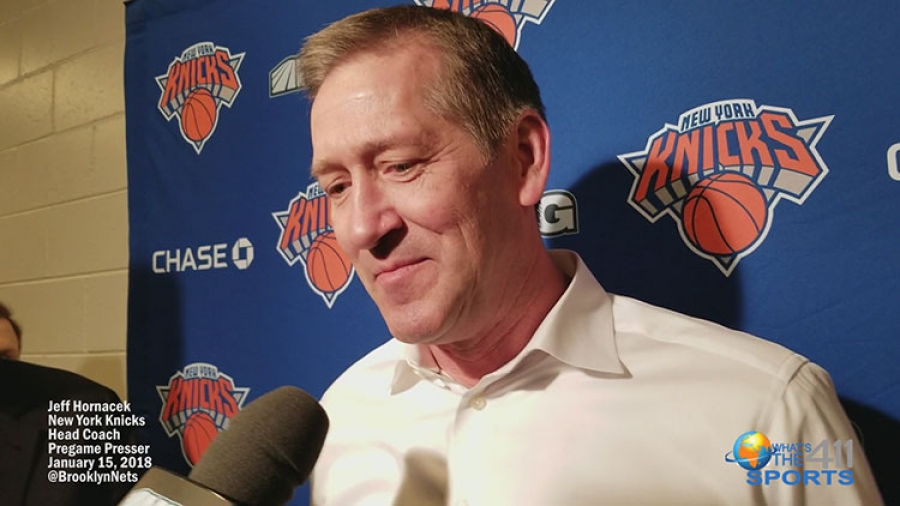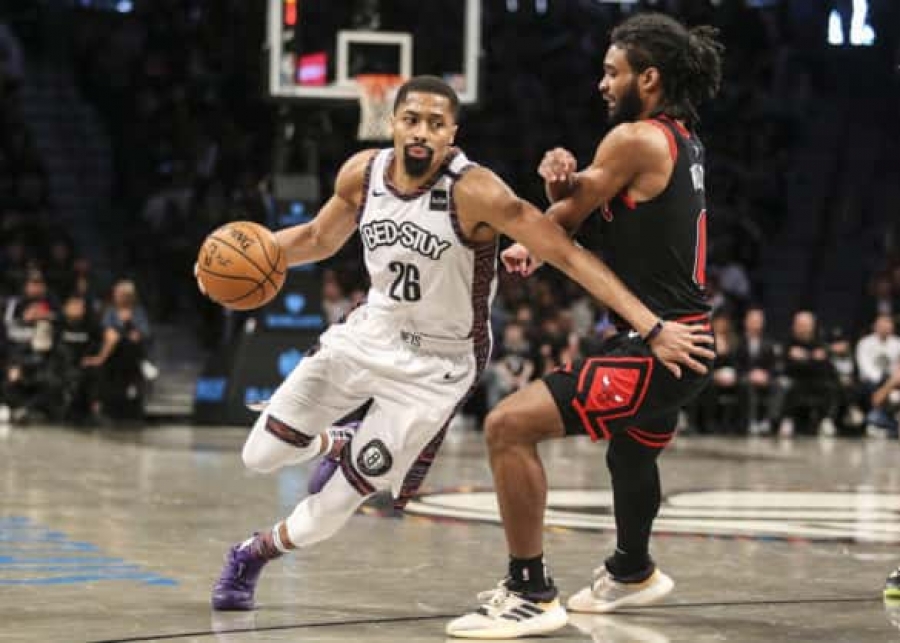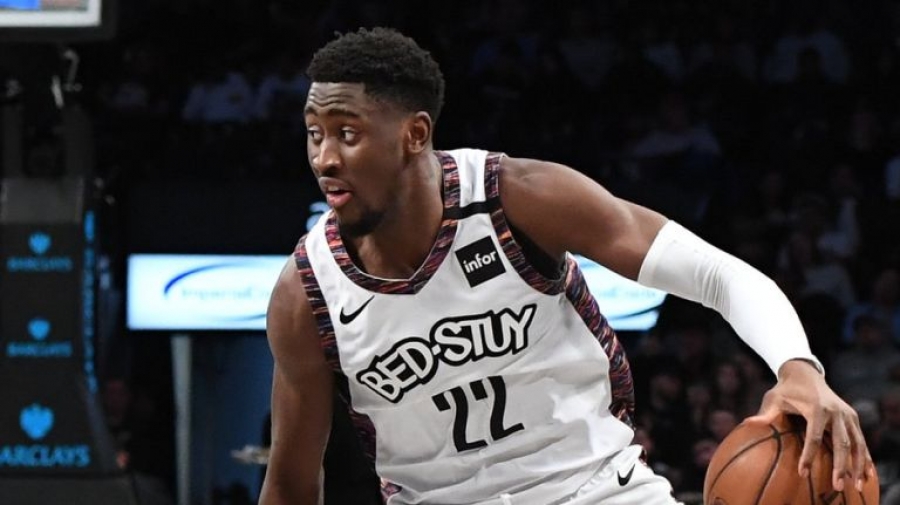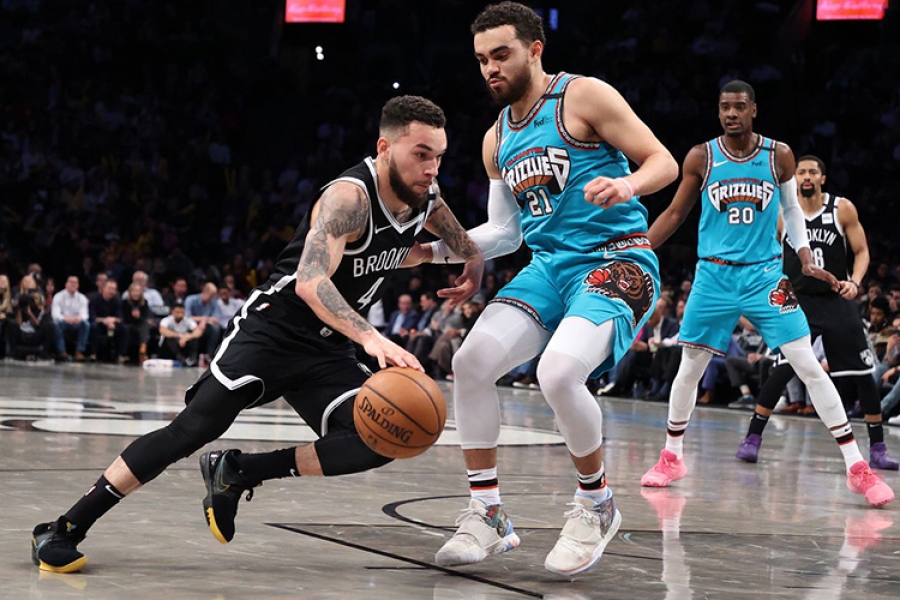Glenn Gilliam
Coming off a tough four-point loss to the surprisingly consistent and dangerous Detroit Pistons at the Palace in Auburn Hills on Friday, Dec. 13th, the more erratic Philadelphia 76ers, seemed just the right answer for the Nets to get back on track and continue to build on the momentum of Deron Williams' return to the starting lineup.
Having lost their previous game in a rout 139-105 to the most-improved Portland Trailblazers, the Sixers appeared listless and the Nets took advantage right from the jump ball, getting out to a quick 7-0 start and Deron Williams with great distribution to all starters, racking up 5 assists in the first 12 minutes to give the Nets a ten point (32-22) lead after one. Joe Johnson was leading all scorers with eight points and while you could tell his stroke was looking good and could have a great game, no one saw the third quarter coming.
While Philly was able to maintain its 10-point deficit (58-48) going into the half, mainly through points off turnovers and staying within striking distance, the third quarter would see the Nets blow the game wide open behind Joe Johnson's blazing hot hand.
After not scoring since the first quarter, an under-the-weather Johnson shot an unbelievable 13 for 20 (65%) overall and a mesmerizing 10 of 14 or 71% from beyond the arc totaling 29 points in the third quarter alone and 37 points for the game. By the end of 48 minutes of play, the Nets were up by 27, 100-73.
Not lost in the shooting exhibition, all Brooklyn Nets starters were in double figures with the team shooting 57 Percent. Andray Blatche, who continued to play outstandingly well, came up big with another 20-point game. He was asked, what do you do when Joe's having a big night like tonight.
"Keep feeding Joe, gotta keep feeding him the ball cause it gave us energy, gave the bench energy, it gave the crowd energy and it's probably the most exciting thing we've seen this season," Blatche responded.
You couldn't get Joe to come out for the 4th.
"Nah, he's a little sick and we wanted him for practice tomorrow," Blatche added.
In the locker room, Johnson was asked how he was feeling and what the shooting tonight felt like?
"I feel great and it was important for us to get a win," Johnson said. "It felt great and I was in the right spot a lot of the times at the right time so my teammates were just finding me and you catch the ball with the seams just right and every time it comes out your hand you feel like it's going in."
Deron Williams echoed those sentiments, "you gotta find the hot hand and when he (Johnson) gets cooking like that, you gotta get it to him. He went nuts, he had 29 in the quarter, oh my God! Anytime you get a win, you feel better and hopefully, we can keep it up, we knew this was a big week for us starting tonight against this team and we took care of business like we needed to and we got a tough Wizards team coming in and that's gonna be a totally different game. They went into the Knicks' house and beat them so they're a good team."
Once again, another positive result with Paul Pierce coming off the bench midway through the first quarter.
The Nets take on the Wizards on Wednesday and close out the week against the Sixers on Friday in Philly.
COMMENTARY
Now that some of the dust has settled following the NBA press conference and the Clippers victory, I'd like to offer a few thoughts on the recent revelations regarding the racist declarations and unfortunate history of discrimination by LA Clippers owner, Donald Sterling and the varied responses to them.
First, what is most important and unfortunately, always under-reported when these racially charged events arise, is the connection this particular revelation has to the broader cultural context of institutional racism and plutocrat entrenchment evidenced in the real-time decision by the Supreme Court of the United States (SCOTUS) last week that upheld the ban on affirmative action at the University of Michigan. The SCOTUS made this ruling while "legacy" for the rich and elite never gets touched and it also equated money to speech with the Citizens United decision.
Other issues with broader racial cultural context include: the vote on unionizing the student athletes at Northwestern University initiated by their black QB; the settlement paid by EA Sports to college football players after years of using their likeness for huge video game profits; recent election voter suppression efforts and the assault on the Voting Rights Act on its 50th anniversary; the difficulty in securing equal pay for women and by extension, blacks & Latinos; the obstacles to raising the minimum wage and fight against unions; the impediments to the President of the United States (POTUS) and Attorney General's efforts to roll back mandatory prison sentences against for non-violent drug offenders; the NFL's effort to legislate the N-word out of pro football after the Incognito vs Martin texting/bullying scandal; Riley Cooper's N-word outburst; Clive Bundy's rants about blacks and slavery; Paula Deen's racist comments; the beliefs that Mitt Romney holds that corporations are people and that 47% of Americans are freeloading, non-taxpayers that don't assume responsibility for their lives and are dependent on the government; and the continuing persecution of our first black POTUS by the right and Republicans.
Unfortunately, the list goes on and on. Occupy Wall Street, try Occupy NBA...NFL...MLB, you get the idea.
The thread that stitches all of these events together is the growing disparity between the 1% super affluent and the 99% middle and working class and poor and how race has historically been exploited to maintain the divide, increase power (economic & political) and a perpetual cheap labor underclass. Sterling represents all of these dynamics as Hall of Famer Elgin Baylor painstakingly recounted in his wrongful termination suit, "he wanted the Clippers team to be composed of poor black boys from the South, with a white head coach."
This is echoed in the comments Sterling made to his mistress, "I support them and give them food and clothes and cars and houses. Who gives it to them? As the New Yorker's Ben Greenman wrote on Twitter "It's not just Donald Sterling's ignorance that's the problem. It's the decades that ignorance has been tolerated because of wealth."
As far as what the NBA presented yesterday, while I don't share the euphoria that many expressed, including all past and present players, and Clipper fans, I'll credit the Commissioner with doing the minimum he had to do, given the global implications and urgency of enforcing some tangible punishment that would help stabilize the crisis and minimize advertiser and fan defections in the middle of their premier showcase, the PLAYOFFS. Timing is everything and I can only imagine if this recording showed up in July instead of April, during what most have observed as some of the best first round playoff basketball they can remember.
Crickets!
The massive assembled press, of at least 200 waited anxiously, leaning forward every time the podium door cracked open and after a prolonged delay, Silver emerged with all the stress of this first nightmare for his administration, etched on his bespectacled face. He expressed that he was outraged and distraught and said Donald Sterling is banned for life from the Clippers and the NBA. But he also curiously admitted during the Q&A, that Sterling's history of well-documented bigotry had no influence in determining the lifetime ban but the owners will include his public record of lawsuits and shameful prejudicial behavior and comments as part of their review in casting their vote to force the sale of the Clippers. Silver must have gone to the Chris Christie School of Incredulous Press Conferences, please.
Silver said he was "shocked" when he first heard the audio file and wished the audio recording was not Sterling or had been doctored and I could only conclude, that again, he appears to want to protect Donald Sterling and would assume David Stern felt the same when earlier allegations and lawsuits were filed. For Silver to say he was shocked either makes him exceedingly naïve, incompetent, or a fantastic liar only interested in maintaining the status quo and all of these are unacceptable. As written in an article for CBS Sports, Gregg Doyle makes it plain, 'Sterling's awful statements made it clear he considers African Americans beneath him and it didn't surprise anybody." Maybe if there was a black Commissioner or at least some C-Suite level blacks at the NBA, maybe there would be more sensitivity to actual discrimination that could be checked at the source early on.
"There's plenty of blame to go around. It's not only the NBA that allowed Donald Sterling to be Donald Sterling though. We did it, we accepted him. Hell, we enabled him. Every ticket you bought put money in his pocket. Every jersey you paid for. Every game that came and went without a protest outside Staple Center, by fans of the NBA, of basketball, of simple human decency. You allowed this. Every column we never wrote, begging the NBA to rid itself of the canker sore that owns the other franchise in LA. I accepted this. Every contract an NBA player and coach signed with Sterling, they enabled this."
Just as the Dow Jones winning corporations, media and by extension government lobbyist and the elected officials they control, didn't want to acknowledge or respond, except by police force, to Occupy Wall Street, so did the NBA wait until the last minute.
Going forward, fans, players, coaches, advertisers, sponsors, and guardians of the game at the Commissioner's level must not ignore the signals. We all must be well-informed, courageous, and vigilant about addressing all inequities when confronted or known. If necessary, we must protest, direct our dollars, support firms or organizations that value our community in order to make substantive progress. We draw the line in the sand here, no one-- owners, commissioners, or the so-called entitled is above scrutiny or sanctions.
Lastly (for now), I think Adam Silver owes Elgin Baylor a long overdue apology, just saying.
This commentary is the opinion of Glenn Gilliam and does not necessarily reflect the opinion of What's The 411 Networks
Follow us on Facebook and Twitter @411SportsTV
The TEAM USA initiative is an effort to further create and implement a structure that includes personal coaches, USTA Sections and USTA Player Development working closer together to help create the next wave of world-class American players. Our vision is to be even more inclusive, collaborative and supportive so that promising young players from all over the country will have the best chance to maximize their potential. -
Patrick McEnroe - GM USTA Player Development
Potential is what the US Open Qualifying Tournament is all about and takes place the week before official tournament play at the USTA Billie Jean King National Tennis Center. It gives the fans a chance to see many of the game's future stars, from around the world, compete against each other and for free. Many of today's most promising American tennis prospects are black and female. Young players such as Tornado Alicia Black (16), Taylor Townsend (18), Madison Keys (19), Sachia Vickery (19), Victoria Duval (19), Sloane Stevens (20), Alexandra Stevenson, Asia Muhammad (23) and Angela Haynes (24) and don't discount the young men, Francis Tiafoe, Michael Mmoh as well as former Junior Champion Donald Young. And they may owe much of their interest in the game to the groundbreaking success of Venus and Serena Williams.
However, equal credit must be given to the US Tennis Association's (USTA) Diversity and Inclusion programs, initiatives and the people who make it work. Deservingly, no one exemplifies the desires and benefits of the organization more than the USTA's Chief Diversity and Inclusion Officer, D. A. Abrams, and his journey and the ever-evolving policies of D&I are a perfect marriage of potential maximized.
David Anthony Abrams has spent his adult professional life working in the game he loves after being attracted to tennis from the images of the incomparable Arthur Ashe he saw as a youngster. His affection can be seen in the lessons the sport taught him, the education it provided him and his desire to see it represented by all who felt like himself. What's The 411's interview was a great opportunity to get these complimentary stories on the record and to reflect our mutual goal, present information as a call to action, support tennis diversity and hopefully, to be an impetus to help you follow your dreams. Enjoy the video interview with USTA's D.A. Abrams below!
Watch: Interview with USTA's D.A. Abrams
A partial conversation between D.A. Abrams and Glenn Gilliam follows:
WT411: We're here at the 2014 US Open Tennis Championships and we have the distinct pleasure of having the Chief Diversity & Inclusion Officer joining us today, Mr. D.A. Abrams. DA, thanks so much for being here.
D.A. Abrams: Oh it's really a pleasure to be here, thanks so much for having me.
WT411: How important is it to have your young stars of color represent, be successful and it helps your cause?
D.A. Abrams: First and foremost if you take note of the demographic change in the country, the fact of the matter there are more people of color living here so it just makes sense for us to have more people of color doing well in the sport of tennis. I mean that's the way we're going to attract more folks of color, in my judgment.
WT411: What is the Chief of Diversity & Inclusion's responsibilities generally and what other departments do you oversee?
D.A. Abrams: The mission of the USTA is to promote and develop the growth of tennis, so the way in which I like to describe what I do is making tennis look like America. And we have an all-hands-on-deck approach, to how we intend to make that happen. We have a strategic direction of six different pillars which really covers everything, not just young kids playing tennis. Everything from the volunteers to the staff, to supplier diversity, you name it we're trying to touch it all.
WT411: Do your programs talk about the history of the game, Althea Gibson, Arthur Ashe and Dr. Robert Walter Johnson their coach, to help build your volunteers and fan base and get folks excited about it?
D.A. Abrams: So earlier I said we have an all-hands-on-deck approach to how we are going to increase diversity for the betterment of the game. I talked a little bit about our pillars. The first one is human assets, so human assets is everything from volunteers, to staff, to providers, to coaches, to fans and ultimately to players, right? We believe that we need to diversify all of that in order to most effectively promote and develop the growth of tennis. The next one is image. You asked the question earlier regarding Arthur Ashe, Althea Gibson, I mean we want to make sure that we're putting out very positive images and we want to make sure that we're showing folks that hey you too can play this sport. So image both internally and externally is very, very important to us.
WT411: With regards to your tenure with the USTA, how did it start, how long have you been in this role, have you always had a love for tennis and what was your role prior to the Chief Officer?
D.A. Abrams: I've been with the USTA for a long time, since 1993, that's 20 plus years, but I've been in this role for a little over two and a half years. I started off as the national coordinator for a program called National Junior Tennis & Learning, which was founded by Arthur Ashe and a couple of other fellas way back in the day, 1969 or so. I did that for a while, I did Minority Participation that's what we used to call it before it became Diversity and Inclusion. From there, I became Executive Director of one of those 17 sections we talked about, did that for 4 years and then came back to the national office to serve as the Director of the NJTL. We had created its own department, which then grew into covering Special Populations, Adaptive Tennis, Wheelchair Tennis, Awards, so it became much more than what it was when I first came on. I then left to head up another one of our sections for six years and then back to USTA in this role and again it's been 20 plus years but it seems like its 20 months or so, it's been going by really, really quick.
WT411: Did you always have a love for tennis?
D.A. Abrams: I learned how to play tennis through the National Junior Tennis & Learning Program, in Philadelphia and just to go back to how I think images are very, very important. I was watching TV, now I tell this story and I just want to make sure that I'm telling it correctly. I was introduced to tennis before I actually started to really play. My sister took me out to the courts, it wasn't a lot of fun because we were just hitting at the ball and we're both picking up balls, right? So it really wasn't until I'm at home, watching PBS, cause this was back in the day when tennis used to come on TV, just about every weekend and I see this African American guy playing that happened to be Arthur Ashe. Now he made it look so easy, that I thought oh, now if Arthur Ashe can do this, I can get there and do this too. Well, that wasn't the case, but I did go out and it got me playing and it's kept me playing and that is the reason why, quite frankly, I'm in this role today. My love of tennis and just being able to, not just play tennis but use tennis as a vehicle to better myself and it's not just me, so many youngsters that were brought up in this local program in Philadelphia, which is a national program. There are over 600 such programs throughout the country touching about 300,000 kids or so every year, so it's a very powerful program.
WT411: Great story, but to get a little more personal, where's your hometown, where are you from and where did you go to school?
D.A. Abrams: I'm from Philadelphia; I grew up in North Philadelphia. Went to High School at a place called Strawberry Mansion, in a pretty tough neighborhood. Was fortunate enough to get a tennis scholarship to a small Division II state college by the name of Millersville, which is in Lancaster County, Pennsylvania. So that worked out quite well for me but I think it even worked out better for my parents because they didn't have to pay anything.
WT411: In terms of your transition to the USTA, after you found your love of tennis and you were playing it, how did you find your way to the organization?
D.A. Abrams; So that's a really good question. I grew up playing tennis. When I graduated from college I went to work as an accountant for a company called Control Data Corporation, out in the twin cities of St. Paul /Minneapolis. I'm not a millennial but I probably have traits of millennials because I just wasn't patient enough, quite frankly, I wanted to get back to tennis. Now had I stayed there, I probably wouldn't be here today but it was a blessing that I wasn't patient enough wanted to get back to tennis, went back to Philly worked for an organization called the Arthur Ashe Youth Tennis Center, and then got the opportunity to come work at the USTA.
WT411: In terms of those Human Assets, how important is it to broaden that diversity pool at the USTA and see those people get elevated, get promoted and move on?
D.A. Abrams: Well it's very, very important. In fact it's so important that we have a, what we like to call a D&I or Diversity & Inclusion scorecard and tennis participation is one of the markers and one of the measures, that's very important, our mission is to promote and develop the growth of tennis. We talked earlier about how Supplier Diversity, so that's one of the markers, but the other two markers, in my view, are very important and they both have to do with human assets. So what does that all mean, in terms of moving up to leadership positions. We're looking at everything but we're measuring who's leading these organizations, who are in management, who are the members of the C-Suites? And I will tell you, that now today if you look at where we are today as opposed to when I started, it's night and day. In fact, when I started on the board of directors, volunteer board, there was one gentleman of color, by the name of Gary Lee, Asian American male from northern California. He was on for a little bit then he dropped off and then there was an African American male that came on the board, by the name of Dwight Mosley, first AA to make the board, he was on for a little bit unfortunately he passed away and then Mayor Dinkins came on to the board and he served for a while and then other folks of color started to serve as well, so it was no longer just one at a time. So fast forward to where we are today. Our first Vice President is a woman by the name of Katrina Adams; she is the first African-American person to serve in that role. We're hoping one day that she will rise to the level of President and if that happens, she will be the first African American President of the USTA. Again, not a lot was happening in 1993 but we were trying, we're starting it but now you fast forward to today and it's looking pretty good there.
WT411: We know the goal is to reflect America and for African Americans the barriers remain economic, access to courts, training, instruction and equipment. What are you guys doing specifically to address those things?
D.A. Abrams: Well we do a number of things, let's first start with that NJTL program, what I failed to say earlier is that NJTL program is an outreach program it's really designed to attract youngsters that would not ordinarily play the sport and that's in 600 markets across the country. No. 2 is we have schools program, where we actually take tennis to where the kids are during the day and we partner with other organizations to provide after-school programs. So we are ensuring that we are going to reach African Americans, Latino Americans, Asian Americans, members of the LGBT community and others. In terms of the equipment, as of a few years ago we started youth-sizing the equipment. Think about that, when I started to play I was trying to play with the same racket as Arthur Ashe. Today, the balls are softer, they bounce higher, the equipment's a lot smaller, the nets are shorter so when you go out, you're pretty much going to have instant success. You may not be able to hit the ball like Serena Williams or Venus Williams but you will have instant success and it makes the game a lot of fun, which will keep you coming back.
WT411: Congratulations on the 2014 nomination for the DANDI Award, that's the Diversity and Inclusion Award, what are you doing with your initiatives to distinguish yourself from your competitor?
D.A. Abrams: Again, we have a D&I all hands on deck strategic plan and approach to really ensuring that diversity and inclusion is utilized as a strategy to grow tennis. We went through the six pillars earlier, what we didn't talk about is how we have those six pillars supported by recommended goals for each one of the pillars, in addition to that suggested tactics.
WT411: The JTLs (Junior Tennis Leagues), there are 6oo across the country, how influential is it that you have with those JTLs, in terms of delivering your programs and how do you interact with them to reach your goals?
D.A. Abrams: I mean this is not hip hop but in hip hop you would say "street cred", right? I think that's what the young people say. I grew up playing in JTL, I am an NJTL graduate, so I can go in and talk to folks, not just the administrators, but I can identify, if I can identify with the young folks, I can at least pull that card. I think it helps, we work very closely with that department, in fact, we have a number of cross-functional teams, we're working very, very closely with that department to ensure that we're supplying them with what they need and they're helping us achieve our goals as well.
WT411: With regards to what's going on in the country today, obviously with Ferguson, here in New York City, it's got to be even more important the work that you guys are doing, do you try to relate any of that current events, that real time stuff to your trainers or your volunteers when your implementing your programs?
D.A. Abrams: For the most part, we do and we don't, if it comes up in a discussion and current events they do come up in discussions we are prepared to answer that and to answer those questions and to incorporate the learnings within the training. The big thing for us is to get across the idea that D&I is a strategy. It's a legitimate and very powerful strategy to help you achieve your already existing goals, whether they be USTA, whether they be tennis related, whether they be life skills, life goals, you need this in order to really do extremely well, not just well but extremely well.
WT411: I want to touch on Supplier Diversity, we talked about it earlier, how important is it to increase those ranks, to bring other suppliers into it and what is the USTA looking for, what kinds of companies is the USTA interested in?
D.A. Abrams: Anyone that can provide a value-add to us, we're very interested in learning more about them. We're very, very serious about Supplier Diversity. Two years ago we had 15% diverse spent, across the enterprise, which is very powerful, a lot of companies on average maybe about 6% or 7%, last year we went down slightly, we're still at 13.5%. We have an individual on our team that that's all they do, in fact the USTA is so serious about really utilizing Diversity & Inclusion to help us grow the sport, we have a department of six and that's pretty big for D&I. We're really walking the talk if you will and I'm very proud of what our leadership is doing both our President and the Board, as well as my boss, I'm a direct report to Gordon Smith, it's just couldn't be more supportive so it's a great place to be right now.
WT411: Are you familiar with MLBs Diversity Summit and do you take some best practices from that?
D.A. Abrams: Yes we steal a lot of those best practices. We're very familiar with that and we've been to all three, the last one was in New York. We're very familiar with what they do and steal a lot of what they do.
WT411: What's your most rewarding moment in your present position, for yourself individually and with your team?
D.A. Abrams: Well I have to go back, I started a long, long time ago and to know that we have an African-American serving as the first Vice President of the USTA is extremely rewarding to me. It's not that I did that, but the fact that I work for an organization that has elevated someone of that stature to that position, means a great deal to me and I think it means a great deal to the organization and certainly to tennis. I think I said earlier that at the USTA, all directors and above must have a D&I related goal, it's not an option, they must have it. Now that's new in 2014 and trust me that's very big.
WT411: As a media company, is there any opportunity to include more media partners of color to get your message out, to be a little bit more of a voice in those communities you're trying to target?
D.A. Abrams: No, we would love that, I was a panelist along with Wendy Lewis of Major League Baseball and a fella from NASCAR at the National Association of Black Journalists in early August. I asked them, you got to ask for what you want, right? For what you're asking me the answer is yes, we would love for you and other companies such as yours to be supportive in getting the message out. We've got a lot of good stories to tell, from the grassroots, to what we're doing in youth tennis, to what we're doing with adult tennis, to what we're doing to get these youngsters that are on the cusp of being, maybe great players, we've got a lot of good stories to tell.
Flushing Meadows, NY - The air is filled with anticipation, as kids from Elmcor Youth & Adult Activities Community Center from Corona, Queens, fill the Grandstand court waiting to meet the reigning US Open Women's Champion, Serena Williams.
It is Thursday afternoon of "Qualies" week and after participating in the Open "Draw Ceremony", the No.1 Women's Player in the world who had already appeared on Dave Letterman the day before, will be front and center during Arthur Ashe Kids Day in two days on Saturday. I mention these activities because I think we take for granted the Williams Sisters and Serena especially and the hefty responsibilities that she and her sister have carried for the better part of 15 years as the best of American tennis and never more so than now. It's amazing to watch them handle their media and philanthropic obligations, play singles and doubles in the same day, and on consecutive days. It really shows how strong-willed they are, their incredible commitment, sacrifice and desire to win and how important it is to have that strong family bond that their parents created from the start. It's also been a real boon, as fan favorites, to the entertainment value of each day's US Open ticket, to have them as part of the daily draw.
An unfortunate casualty of the first round draw was pitting the defending champ against American Junior Champion, Taylor Townsend of Chicago. The eighteen-year-old lefty, as an American and African American, may have made some noise in the tournament, if not for playing her mentor and friend in the opening round. That is correct, I said friend, as we confirmed in Serena's first interview when asked What was your initial reaction when you found out you were opening against top-ranked junior, Taylor Townsend?
"Yeah it's going to be a great match for me," said Serena. "She's such a great player. Extremely young, I have been able to see her play a little bit. She does everything really, really well. We're really good friends. We always talk and always text each other. It's going to be a really tough match for me."
I followed by asking about her thoughts on the history that lay ahead.
"You talked after winning the Western & Southern, you feel like you could play for a long time," I said. "If you get to 22 or 23 Grand Slam titles might you decide to hang them up?"
"Well, that would be just really amazing if I can make it that far,' she said. "Competition is a little stiff now, so I have to do the best I can and I can't even think that far to be honest."
Watch Video: Serena Williams on Getting to 22 or 23 Grand Slams
"Well, would you consider it an unsuccessful year if you don't win a Grand Slam," I asked.
"Probably, yes," Serena stated. "But there's always next year and the year after, so I don't necessarily – you don't give up. You just keep going and you keep fighting to continue to win more."
Watch Video: Serena Williams on If She Didn't Win a Grand Slam This Year
How is your school in Kenya going," I asked switching the subject.
"It's going good," responded Serena. "We just had a great update. We built a new building. It's been really, really amazing".
A reporter asked Serena that a couple of people had heard that she was having a show for Aneras in a couple of months and asked if she could talk about it.
"Yeah, no; I'm having a fashion show for Serena's Signature Statement and I'm launching Aneras," Serena Williams responded. "They are two totally separate fashion lines. This show we are doing for fashion week, New York has always been a dream of mine to have a fashion show at NY Fashion Week. We are doing the collection that sold on HSN for Serena's Signature Statement. We have casted the models and it's been a really great experience. I'm really excited and nervous at the same time to see the reactions and hopefully, we'll get a full house."
Watch Serena Williams talk about her fashion line, Serena's Signature Statement
During her early matches, Serena's biggest challenge was the unpredictable winds that made consistent serving difficult. Until adjustments could be made, her opponents never really threatened her, as she never conceded more than 3 games in any set, winning each match in straight sets as she did in two previous title wins. Although she hadn't really been tested in the singles and unfortunately lost in the doubles with sister Venus, this is the first Grand Slam all year that she had reached the Singles Quarterfinal round and it showed as she raised her arms in victory over Kaia Kanepi in the 4th Round and gave a ball to an adoring fan and emphatically declared to the cheering crowds "I made it to the Quarterfinals!" And with all that was riding on it, it seemed like destiny, here's what was at stake.
Serena Williams' milestones are historic:
-15th Anniversary of her first Grand Slam victory, and US Open - the 1999 US Open.
-18th Grand Slam Title which ties her with Chris Evert & Martina Navratilova, for fourth all time. Margaret Court (24), Steffi Graf (22), Helen Wills Moody (19)
-She is a three-peat US Open Champion, winning the Open 3 years in a row.
-Her 6th US Open Title overall, tying Chris Evert for top honors.
-At 32, Serena continues to extend her reign as the Women's Champion with the greatest number of years between her first and last titles (15)
-She is the 2014 Emirates Airlines US Open Series Champion winning an additional $1MM and Serena's prize money has made Women's Tennis history, taking home a record $3MM check for a new highest payday in tennis and wining $4MM total after clinching the title. She already holds the previous record at $3.6MM, with Rafael Nadal, for winning it last year.
In our last interview we asked her what we know everyone's been dying to know.
"Does the new leopard print outfits mean the "catsuit" might be making a comeback," I asked.
"That's a good question," said Serena. "We all loved the catsuit; at least I did."
"Gives us hope," I responded.
"Keep hope alive," Serena added.
"Where is the catsuit," another reporter inquired.
"Yeah, I have all of my outfits. I saw it the other day actually in my closet, Serena said.
"Sounds like a hashtag campaign," I added.
"Right," Serena concurred and then added, "Of course hashtags didn't exist back then."
So please hit us up at #411SportsTV and join the #BringBackSerenaWilliamsCatsuit campaign.
Watch Serena Williams Talk About Her Famous Catsuit
All jokes aside, Serena Williams' victory in the US OPEN 2014 Women's Final over close friend Caroline Wozniaki (6-3, 6-3) was another seminal moment in arguably the greatest female athlete's career ever and it makes us even more excited about 2015 and going down under to Australia...we'll see ya there.
The NFL Network and The New York Times put the Pro Football Hall of Fame to shame in Junior Seau case; they put family first
I am tackling and throwing the Pro Football Hall of Fame On The Bench for not allowing Sydney Seau to speak on behalf of her father, Junior Seau.
Seau was suffering from excruciating pain from head trauma committed suicide, in May 2012. Prior to his suicide, Seau told his daughter, Sydney, to speak on his behalf if he made into the Pro Football Hall of Fame.
However, citing a 5-year-old policy of not allowing people to speak on behalf of deceased inductees, the Hall would not allow Sydney Seau to fulfill her father’s wish by speaking on his behalf at his Pro Football Hall of Fame enshrinement ceremony.
Both the NFL Network and The New York Times gave Sydney what the Pro Football Hall of Fame did not. They stepped in and gave Sydney Seau the opportunity to give her speech on their respective platforms.
VIDEO: Ohio State's Braxton Miller smartly exercising his options; should Tim Tebow have done the same?
Ohio State Football is starting the season with some challenges. With four starters suspended for its season-opening game vs Virginia Tech, which was Ohio State’s only loss last year, OSU’S QB Braxton Miller plans to play wide receiver for the defending CFL NATIONAL CHAMPIONS.
Given the logjam at QB with Cardel Jones and JT Barrett and the loss of some of their starters at wideout and the backfield, Miller decided to utilize his exceptional athletic talents to move to the wide receiver position. Coach Urban Meyer says we started working with him a month ago and as a great athlete, he expects Braxton to be an “impact player”.
VIDEO: Frank Gifford, an NFL Star, Reigned on Monday Night
Sadly, we acknowledge the passing of NFL Hall of Famer, Frank Gifford. He died yesterday from natural causes at the age of 84. He would have been 85 years-old on August 16, 2015.
VIDEO Discussion: The 2015 Pro Football Hall of Fame Induction Ceremony Wrap-up
The 2015 Pro Football Hall 0f Fame Induction Ceremony was held last weekend and Sydney Seau representing her deceased father, Junior Seau, stole the show. Looking forward to next year, Tony Dungy, Brett Farve, and Terrell Owens are first-time eligible. Which one is getting in the first time out?
VIDEO Discussion: NFL Commissioner Roger Goodell Seems to be holding New England quarterback Tom Brady accountable for Deflategate
NFL Commissioner Roger Goodell has not budged off the 4-game suspension for New England Patriots quarterback Tom Brady. The suspension is based on The Wells Report which said Brady probably knew something regarding the New England Patriots' deflation of game balls in the 2014 AFC Championship game vs the Indianapolis Colts. The fact that Brady took three months to reveal that he destroyed his personal cell phone back in March was probably hugely influential in Goodell's decision.
VIDEO Discussion: Ronda Rousey Best Female Athlete...The ESPY Awards were even more incredulous than usual
Joel McHale hosted the awards program and was ridiculous in a bad way. I couldn't stand to watch it after a thoughtless and stupid opening saying that the worst person in the world is named and he proceeds to make a hybrid of all the worst murderers, dictators and despots and added Ray Rice's name at the end.
Racist, ignorant and disrespectful, as unfortunately we've become used to seeing blacks regardless of stature or history, if there's an opportunity to trash them, certain whites will all too often use us as a punching bag.
The ESPYS are always a joke, but Ronda Rousey over Serena Williams is downright comical.
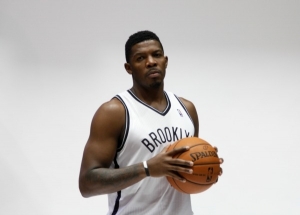
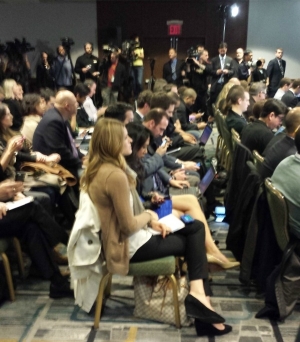

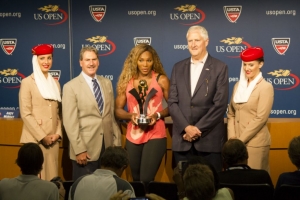
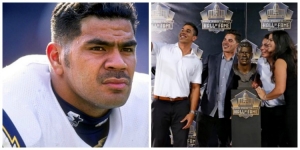
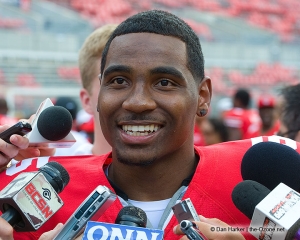
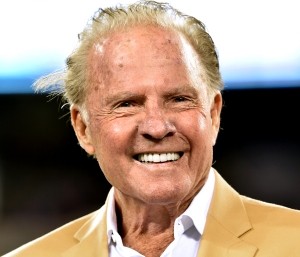
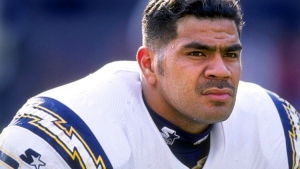
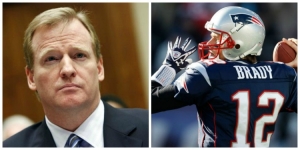
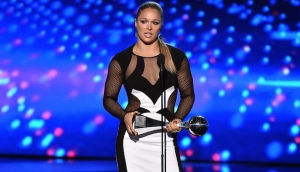
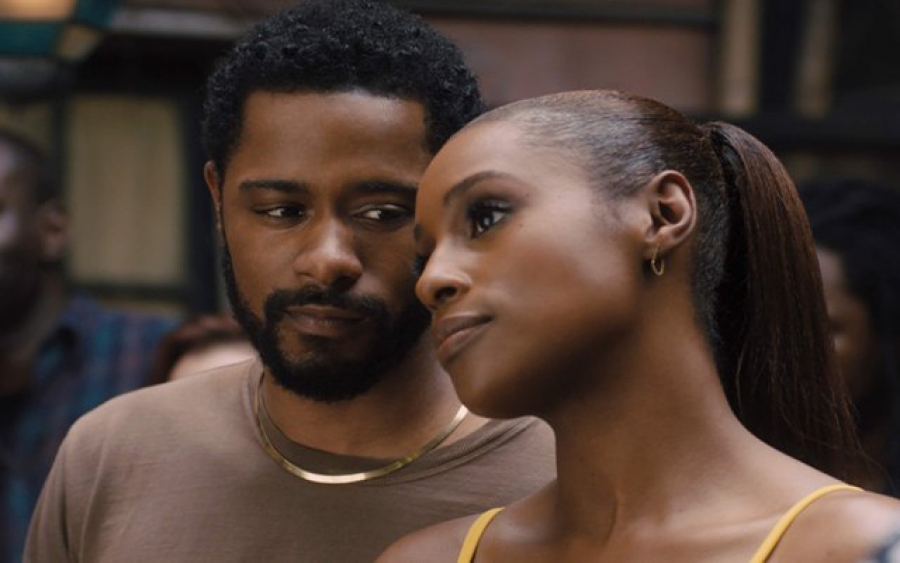

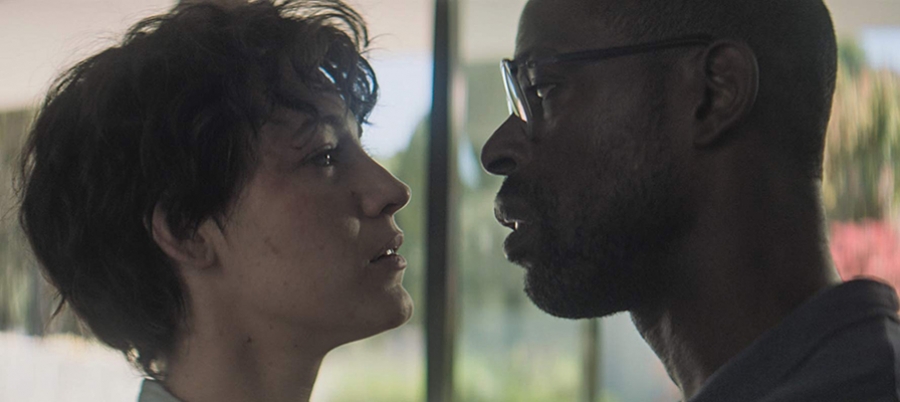
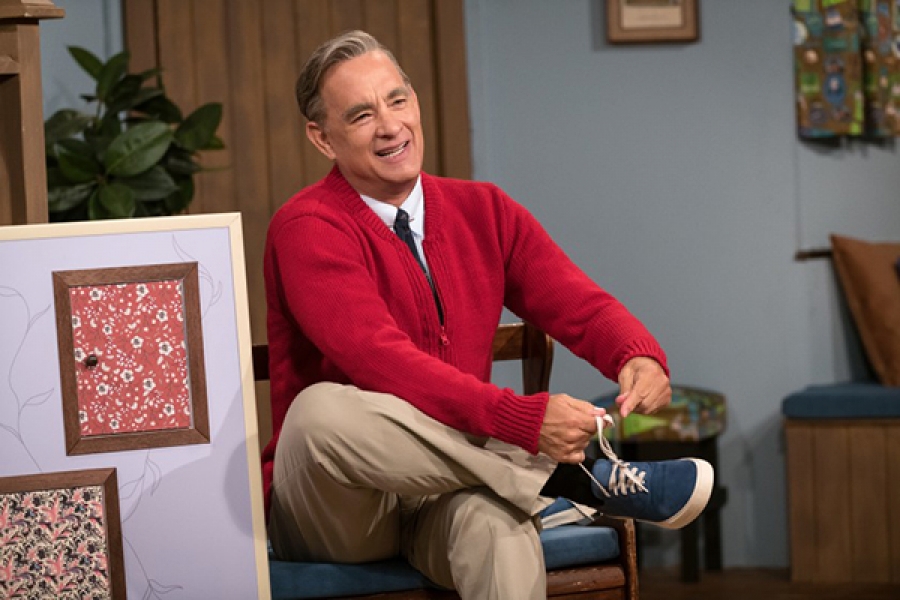
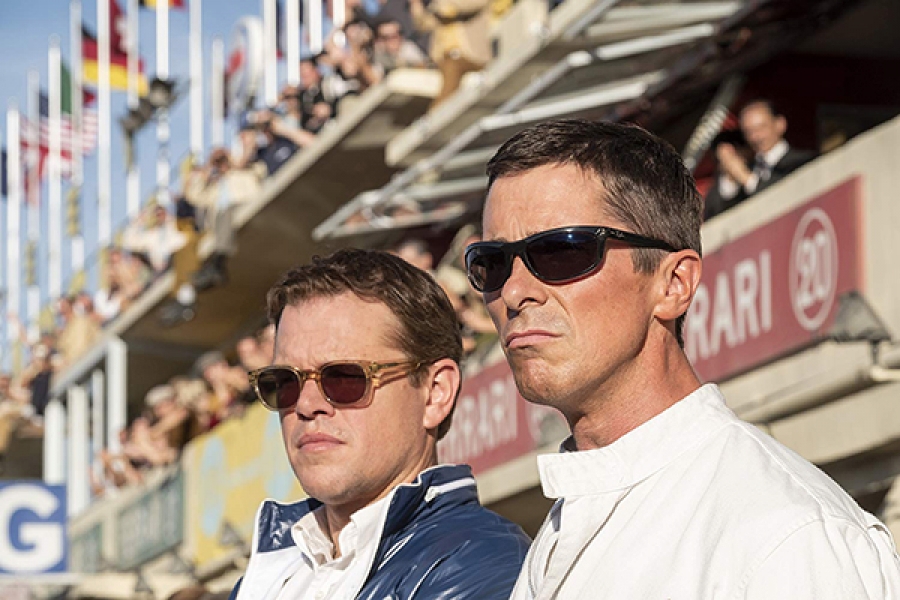

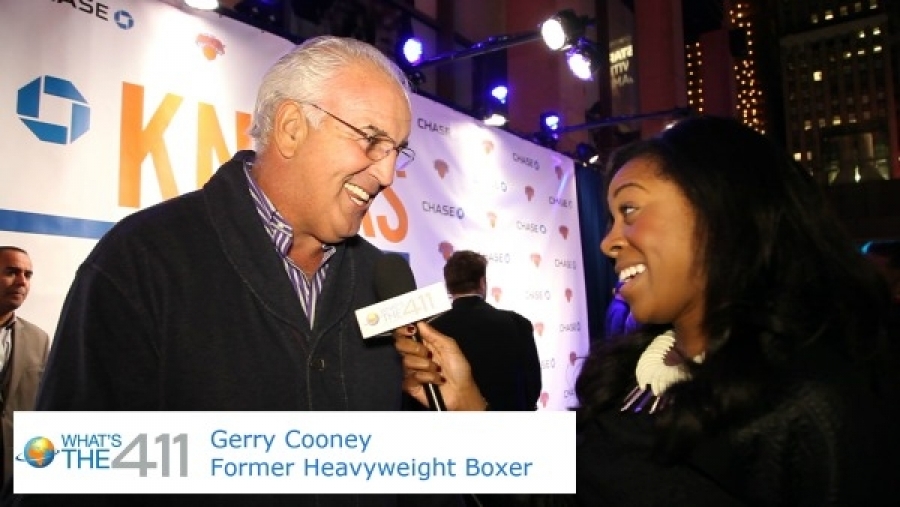
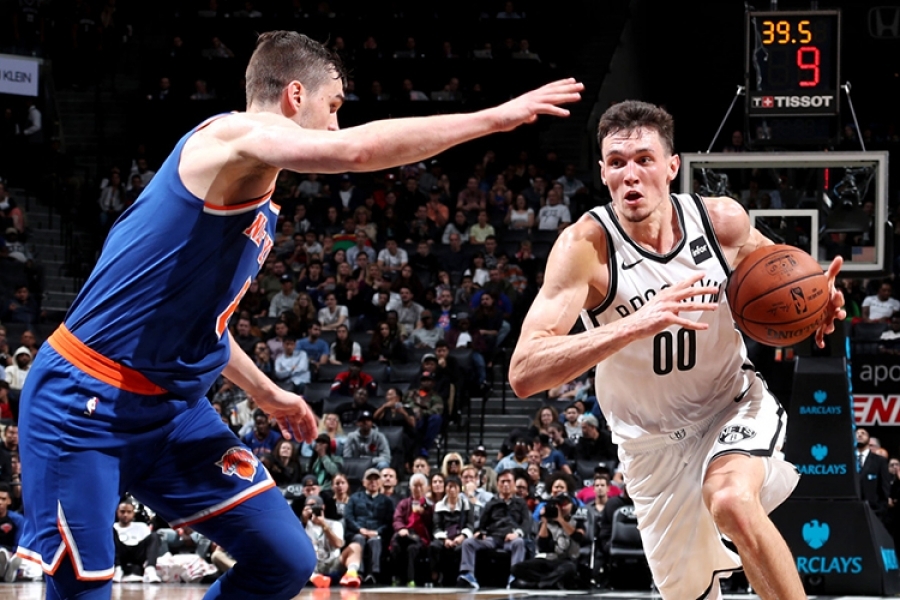
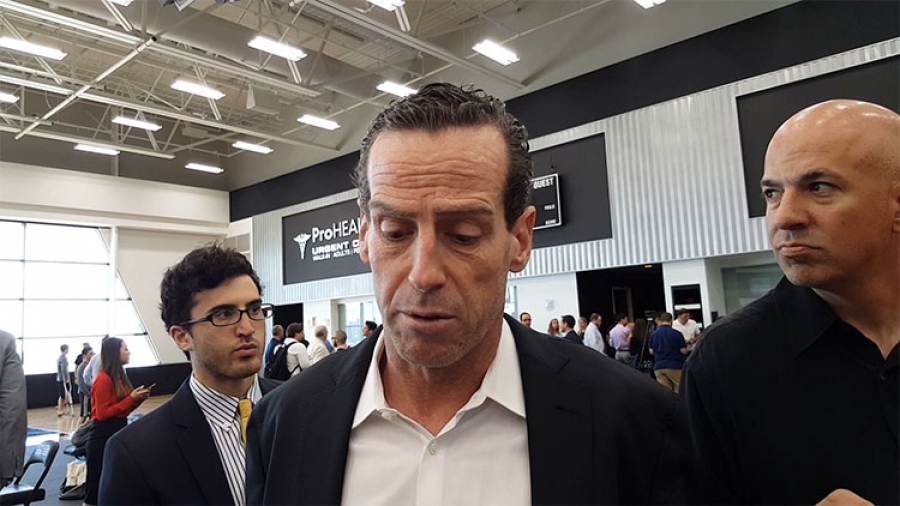
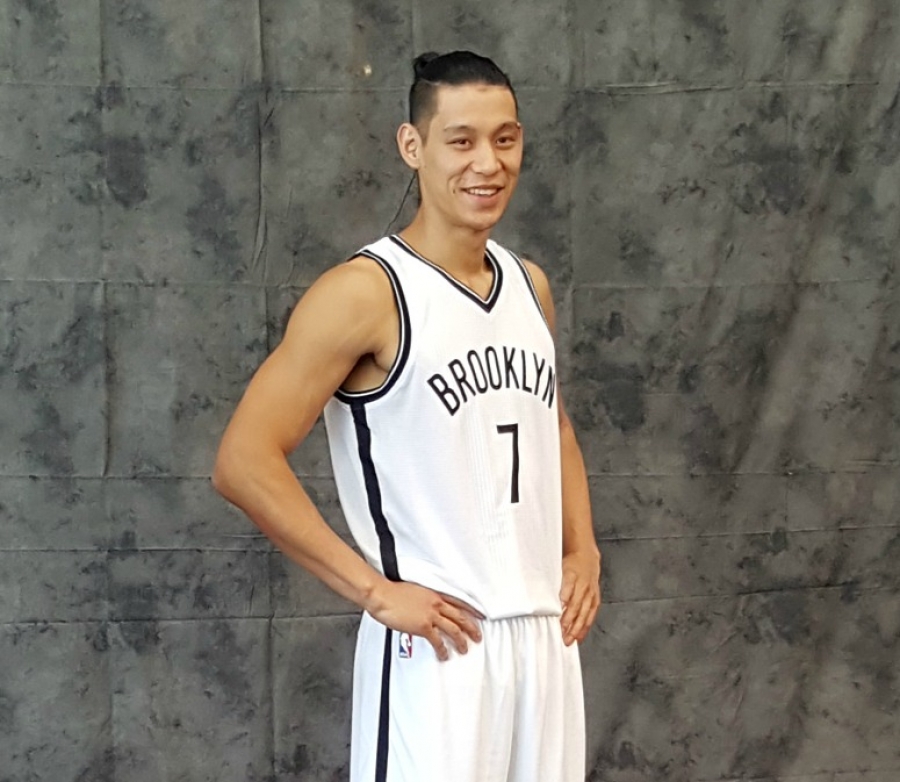
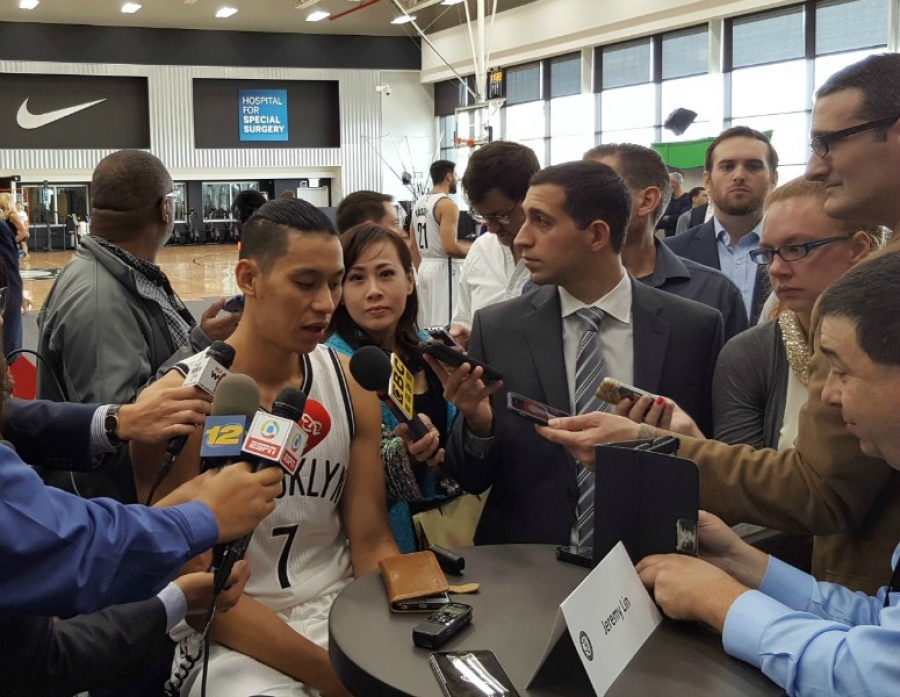
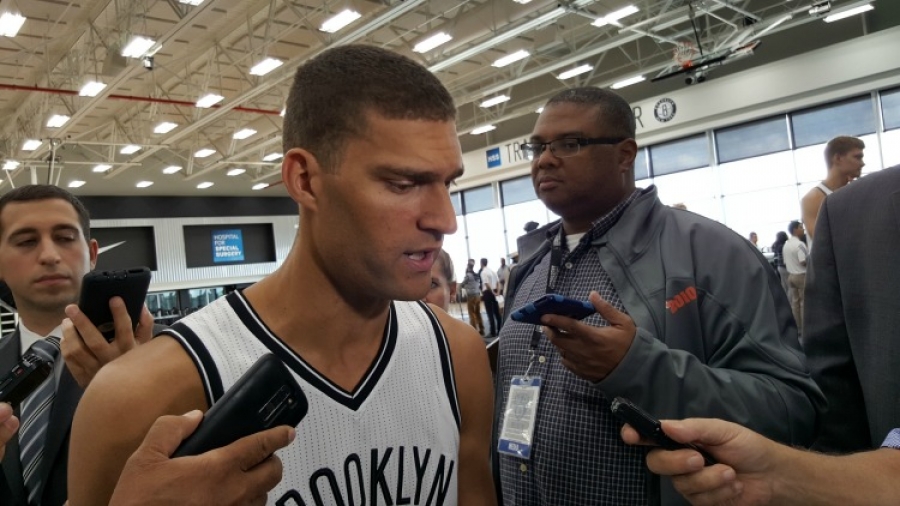
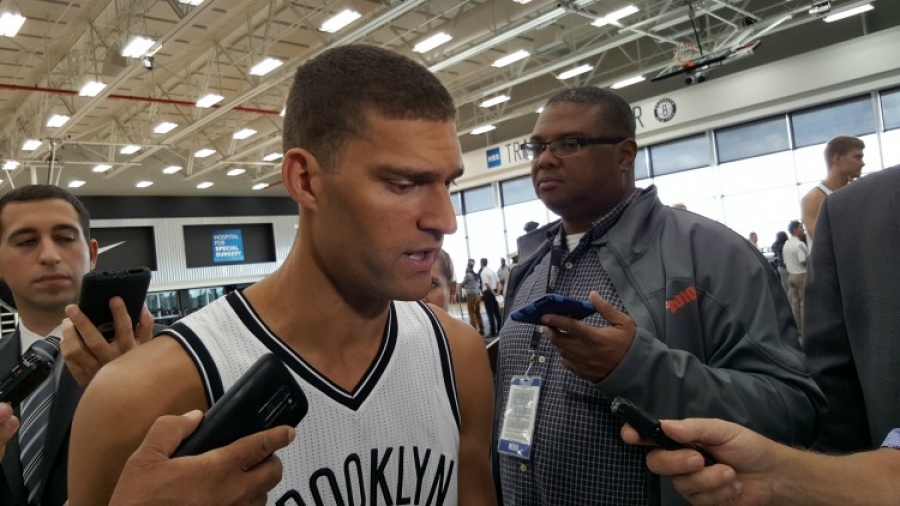
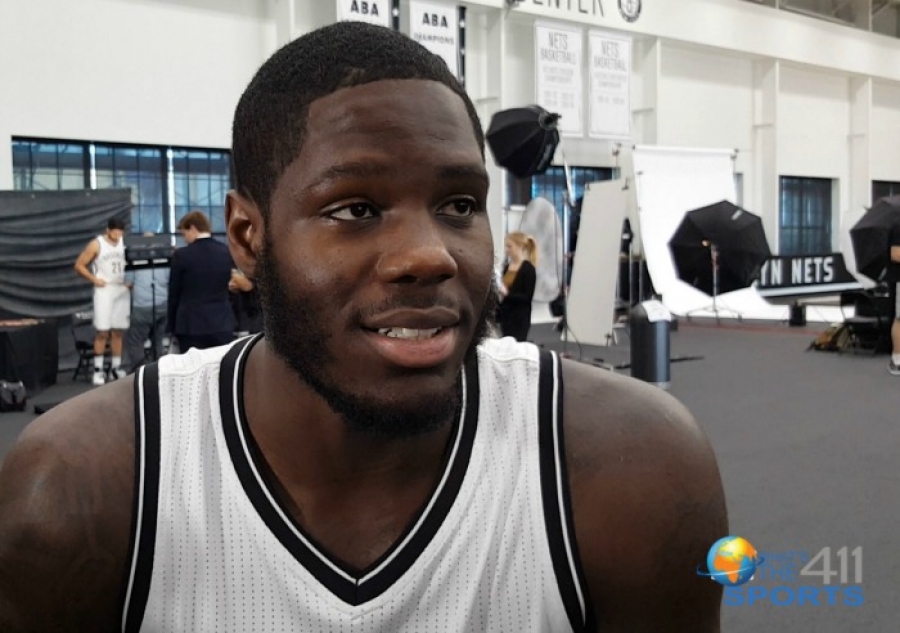
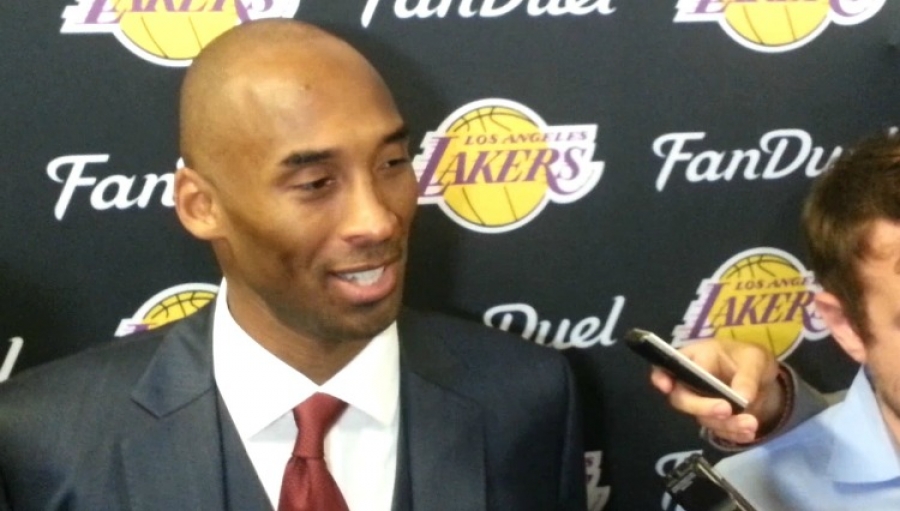
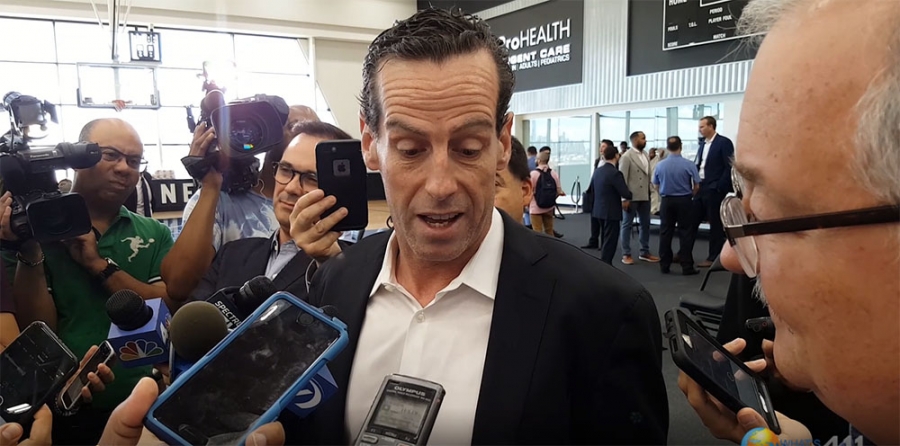
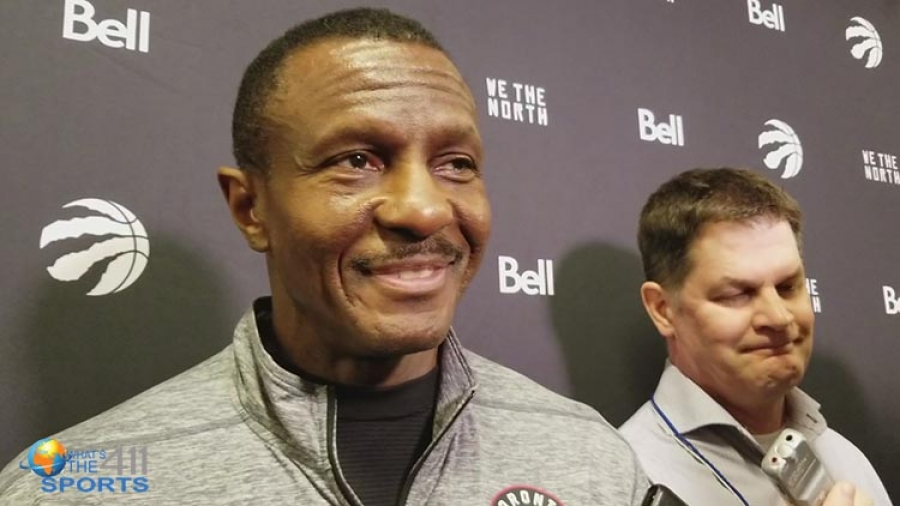
![Doc Rivers Talks About Encounter with Referees [as a Spectator]](https://casite-779687.cloudaccess.net/media/k2/items/cache/21615ff211c60b43d866a2b2bca320da_XL.jpg)
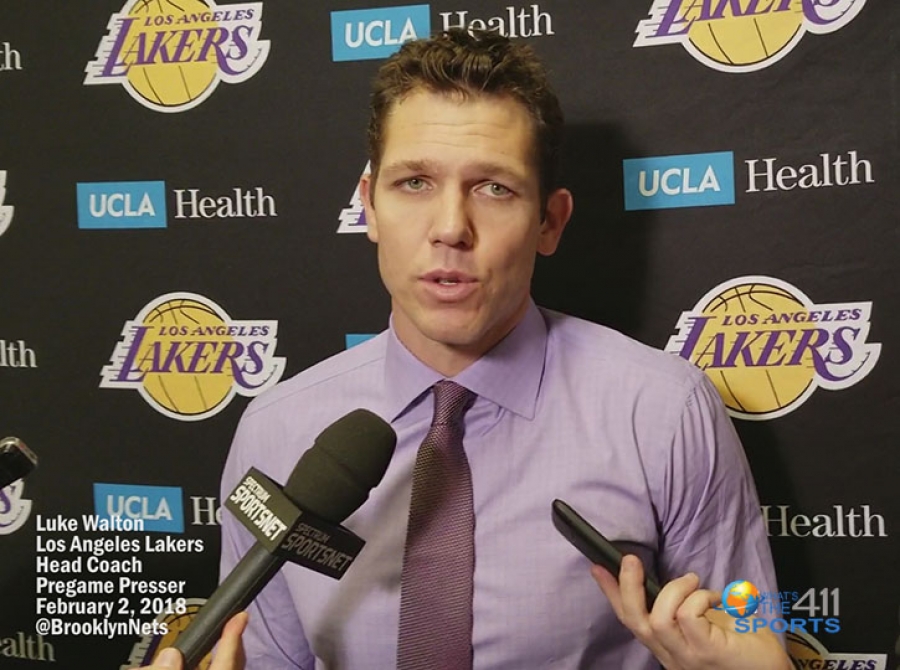
![Gregg Popovich Dishes on Spurs Assistant Coach Becky Hammon [VIDEO]](https://casite-779687.cloudaccess.net/media/k2/items/cache/e4695529e9bbf8b60b6165d76397876b_XL.jpg)
